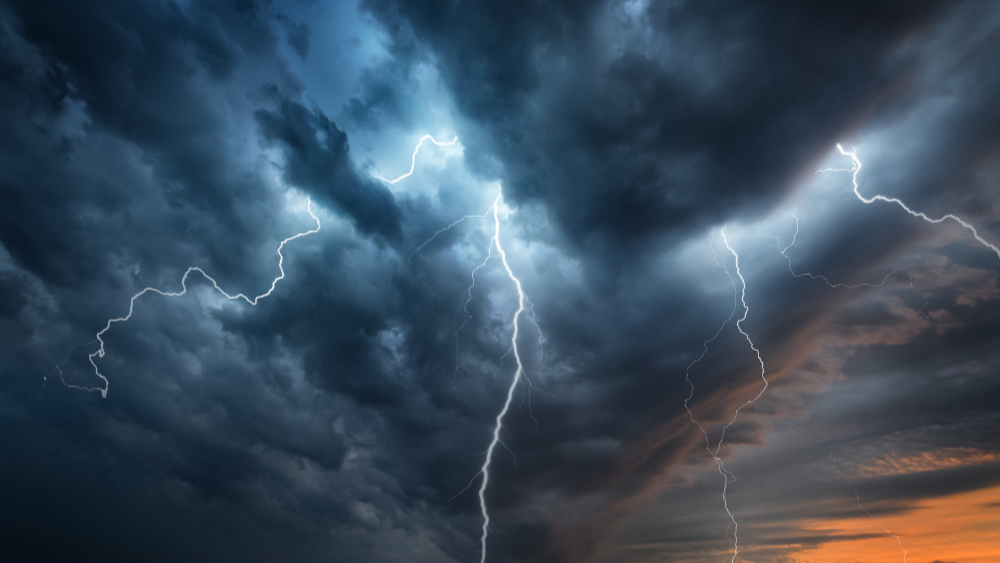Valencia Storms: What is a DANA?
Is climate change the reason for such storms to become more regular, especially in the autumn months?

The storm that has affected so many communities in the Comunidad Valenciana has not only been one of the most intense recorded in recent years but also one of the deadliest and most destructive. At the time of writing, the authorities have confirmed that the death toll in the region has risen to 202 with a further three victims in Castilla-La Mancha and Andalusia.
And as rescue work continues with almost 2,000 troops from the Military Emergency Unit (UME) deployed to the region to assist local emergency services, the state meteorological agency AEMET continues to issue warnings for the potential for more heavy rain across areas in the north of the Comunidad Valenciana and southern areas of Cataluña as well as the Balearic Islands, particularly on Saturday.
There is no single factor that can explain why such a storm has caused so much destruction and tragedy. Post-summer storms are quite common in the eastern provinces of Spain when cooler air combines with a Mediterranean Sea that is still cooling down from the heat of the summer. And what is becoming clearer is that the most extreme of these types of storms are becoming more frequent due to climate change.
What is a DANA?
DANA is the acronym for ‘Depresión Aislada en Niveles Altos’ which refers to the volatile phenomenon known as a ‘cut-off low’, a pocket of polar air that breaks away from the usual atmospheric circulation current and drifts slowly south, in this case towards the Iberian Peninsula. They are normally around 5,000m above sea level and the interior of the storms can be minus 20°c or colder.
Sometimes known as a ‘gota fría’, it can produce a large amount of precipitation in a very short space of time. Many factors can combine to make such a storm more violent than normal and, in this case, several of those factors have come together, all of them connected with climate change.
Such storms are fed by hot air and humidity which rise into the upper layers of the atmosphere through the process of convection. When they reach the large pocket of very cold polar air, the water vapour condenses, and the rainfall begins. In this case, the easterly winds and the high temperatures of the surface of the Mediterranean Sea, unusually warm for this time of year, combined to recharge the storm with water vapour repeatedly, the coastal mountain ranges acting as ascending ramps for the heat and humidity, creating a constant cycle.
The DANA phenomenon would normally last for just a few days, but this particular pocket of polar air has been particularly large, about 200 kilometres across, and larger storms have difficulty moving, often remaining stationary for more than 24 hours over the same region, as had happened this week above the Valencian region. This factor, combined with the constant refuelling of the storm, has caused unusually intense rainfall over the same area and accumulations have reached over 600 litres per square metre in some places.
The phenomenon will end when all these factors disappear. However, the favourable conditions for the formation of more ‘gota frías’ are more likely to continue, which means that there is the potential for more severe storms for the rest of the autumn and into the winter. Until recently, this type of devastating storm usually occurred once every 30 years but now it is becoming more frequent with the last significant flooding episode taking place in 2019 in the Vega Baja in the south of the Comunidad Valenciana.
Although it is impossible to say for certain that a specific storm is the direct cause of climate change, it is agreed by many experts that the intensity and violence of such storms are due to the increase in temperatures caused by human activity. The North Pole is warming up almost four times faster than the rest of the planet, which is causing the normal circulation of air masses to be disrupted, making it easier for large masses of polar air to break away and drift south. When such masses combine with abnormally warm air and sea temperatures, the risk of severe storms bring intense rainfall increases and consequently the risk of devastating flooding is also increasing.
With such a risk becoming more likely, some experts are already suggesting that the red risk alert level issued by AEMET is no longer enough to warn the population of the potential of the forecasted conditions and have proposed that a new risk alert level be added to the current levels of green, yellow, orange and red.
Meteorologist Jorge Olcina, an expert in climatology, explained that “DANAs involve more quantity and intensity of precipitation than a Caribbean hurricane or an Asian typhoon”, adding that the high temperature of the Mediterranean Sea “transfers a lot of energy to the cloud systems and generates these very energetic storms that cause torrential rain”. Therefore, he suggested, a new black warning would make it even clearer that lives are at risk or, at the very least, more work is done to emphasize what a red warning means.
AEMET Alert Levels
Currently AEMET issued three levels of risk alert:
- YELLOW – Be alert. Stay informed of the most up-to-date weather forecast. Some outdoor activities may be altered.
- ORANGE – Be prepared. Take precautions and stay informed of the most up-to-date weather forecast. Usual outdoor activities may be altered.
- RED – Take preventive measures and act according to the instructions of the authorities. Stay informed of the most up-to-date weather forecast. Usual activities may be seriously altered. Do not travel unless strictly necessary.
AEMET generally updates warnings for the current day between 7.30am and 9.00pm and for the next two days between 10.00am and 11.30am. Between 9.00pm and 11.00pm, all issued warnings are reviewed, whilst warnings for three days in advance are issued between 9.00pm and 11.50pm. However, these warnings can be reviewed and updated at any time according to the developing conditions.






